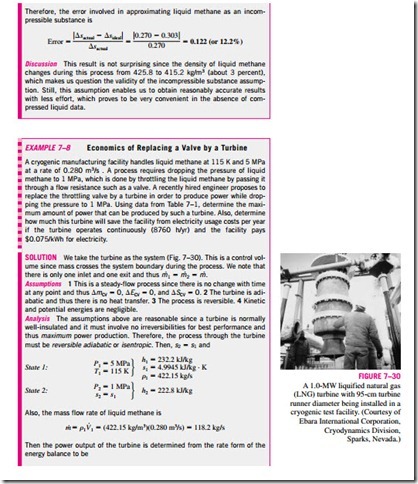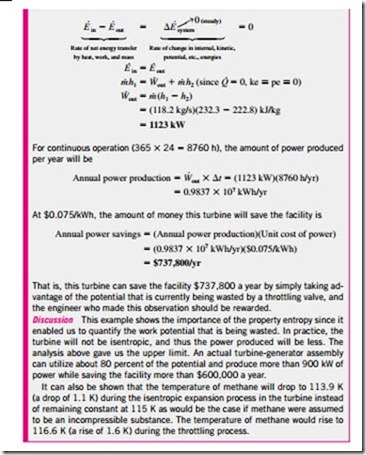ENTROPY CHANGE OF LIQUIDS AND SOLIDS
Recall that liquids and solids can be approximated as incompressible sub- stances since their specific volumes remain nearly constant during a process. Thus, du � 0 for liquids and solids, and Eq. 7–25 for this case reduces to
where Cav is the average specific heat of the substance over the given temperature interval. Note that the entropy change of a truly incompressible sub- stance depends on temperature only and is independent of pressure.
Equation 7–28 can be used to determine the entropy changes of solids and liquids with reasonable accuracy. However, for liquids that expand consider- ably with temperature, it may be necessary to consider the effects of volume change in calculations. This is especially the case when the temperature change is large.
A relation for isentropic processes of liquids and solids is obtained by set- ting the entropy change relation above equal to zero. It gives
That is, the temperature of a truly incompressible substance remains constant during an isentropic process. Therefore, the isentropic process of an incompressible substance is also isothermal. This behavior is closely approximated by liquids and solids.



